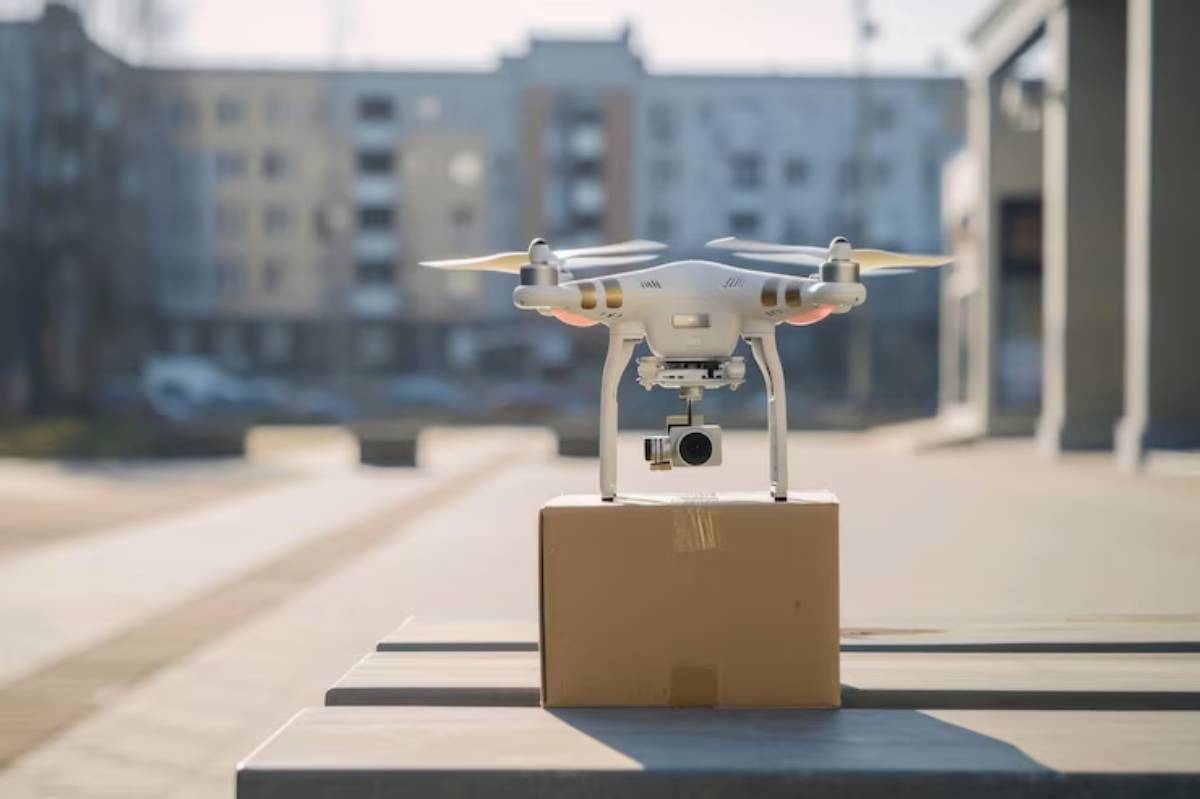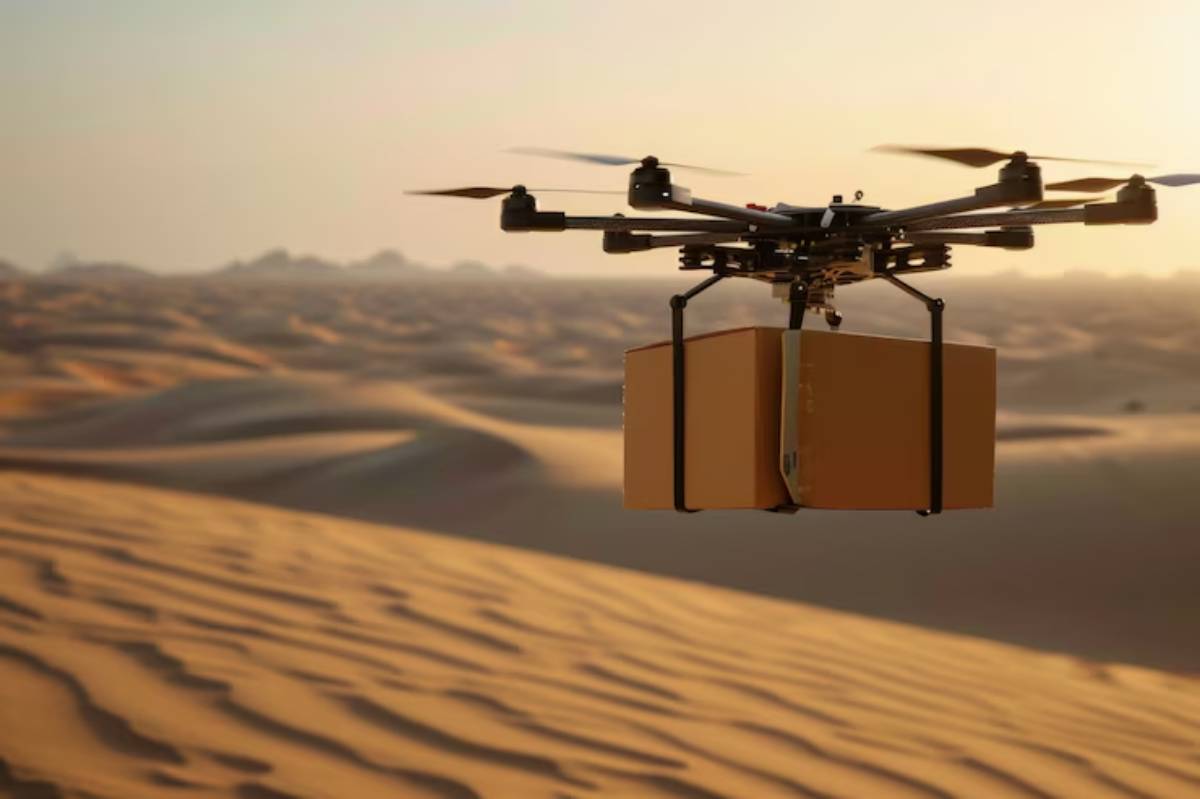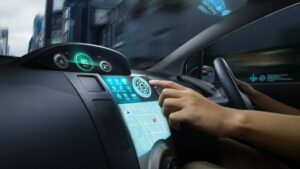The Technology Blog

The Rise of Delivery Drones: What to Expect
The way goods are delivered is changing. With the rise of drone technology, the idea of fast, contactless, and automated deliveries is quickly becoming a reality. Delivery drones are no longer a distant concept. Companies are actively testing and rolling out drone-based logistics systems to meet consumer demand for faster service.
What Are Delivery Drones?

Delivery drones for online shopping are unmanned aerial vehicles (UAVs) designed to transport small packages from one point to another. They are equipped with GPS systems, cameras, sensors, and automated flight controls that allow them to navigate to their destination without a human pilot.
These drones are typically used for short-range deliveries, especially in urban or suburban settings. Their compact size and agile movement allow them to bypass traffic and reach locations more efficiently than traditional delivery vehicles.
Why Are Delivery Drones Gaining Attention?
Several reasons explain the growing interest in aerial delivery systems:
Speed and Efficiency
Drones can cover short distances much faster than cars or bikes, especially in congested cities. A delivery that might take 30 minutes by road could be done in under 10 minutes by air.
Reduced Human Labour
With automation, companies can reduce their reliance on human delivery drivers. This can help lower costs in the long term and also solve labour shortage issues in logistics.
Contactless Delivery
During events like the COVID-19 pandemic, contactless delivery options became crucial. Drones provide a completely hands-off method of getting goods to customers.
Environmental Benefits
Electric-powered drones produce fewer emissions compared to petrol or diesel delivery vans. For companies focused on sustainability, drones offer a greener alternative.
Companies Leading the Drone Delivery Race
Several tech and retail giants have already started testing drone delivery systems. Some of the most notable players include:
- Amazon Prime Air: Amazon has been developing drone delivery for years. They have made great strides in the U.S. and other countries.
- Alphabet’s Wing: A subsidiary of Google’s parent company, Wing has launched successful pilot projects in Australia and the U.S.
- UPS Flight Forward: UPS got FAA certification to run delivery drones. They’ve already used them to deliver medical supplies.
- Zipline: This company is known for delivering medical supplies by drone in Africa and is expanding its services globally.
Where Are Drones Being Used Now?
While drone deliveries aren’t common yet, many pilot projects are happening worldwide.
Medical and Emergency Supplies
Drones have been used successfully to deliver essential medical items. They transport blood, vaccines, and medicines to remote or hard-to-reach places.
Urban Parcel Delivery
In some cities, drones are being used to deliver lightweight parcels like documents, electronics, and food items.
Rural Deliveries

Drones are particularly useful in rural areas where traditional delivery options are limited. They can reach farms, islands, and small towns much faster than ground transport.
Challenges to Widespread Drone Delivery
While the potential is high, there are still a number of hurdles to overcome before drone deliveries become common:
Regulatory Issues
Each country has different laws regarding drone flights. In many areas, flying drones out of sight or overcrowded places is still not allowed.
Safety Concerns
There are risks of drones crashing, causing injury, or interfering with aircraft. Ensuring safe flight paths and creating no-fly zones is essential.
Weather Limitations
Drones are sensitive to wind, rain, and extreme weather. Ensuring reliable delivery during poor weather conditions remains a challenge.
Noise and Privacy
The noise generated by drones could become a nuisance in quiet neighbourhoods. Also, the presence of cameras raises concerns about surveillance and privacy.
What Kind of Packages Can Drones Carry?
Most delivery drones are currently designed for light to medium-weight packages. This usually includes items under 5 kilograms. Common examples include:
- Small Electronics
- Medicines and medical kits
- Food and beverages
- Books and documents
As drone technology advances, it is likely we’ll see an increase in carrying capacity and distance range.
Future of Drone Delivery: What Lies Ahead?
The next few years will be critical for the drone delivery industry. Here’s what we can expect:
Better Infrastructure
We’ll likely see the development of dedicated drone airways, landing pads on rooftops, and even smart lockers for secure drop-offs.
Faster Deliveries
With better technology, delivery times may shrink even more. Soon, same-hour delivery might become a reality.
Integration with Smart Cities
Drones can fit into smart city systems. They work with traffic control, weather monitoring, and emergency services.
Broader Accessibility
As drone technology gets cheaper, smaller businesses might use drones for local deliveries. This change could make the system more democratic and accessible.
Conclusion: Drones Are Set to Take Off in Delivery Logistics

Delivery drones have soared from mere science fiction to reality. They’re being tested and fine-tuned, inching their way into modern logistics. Regulatory roadblocks and tech hurdles still exist. The bright benefits of flying couriers bring a hopeful future. They offer fast delivery, efficient logistics, and eco-friendly travel.
As technology evolves and infrastructure expands, the skies may soon dance. Imagine parcels flying overhead like shooting stars, not needing vans anymore. From hot coffee to lifesaving medicine, delivery drones are soaring. They’re considering revolutionising how we receive our treasures—one aerial drop at a time. Whether it’s a wayward charger or sought-after supplies, convenience now flies directly to your doorstep. Embrace the future where packages take flight!









